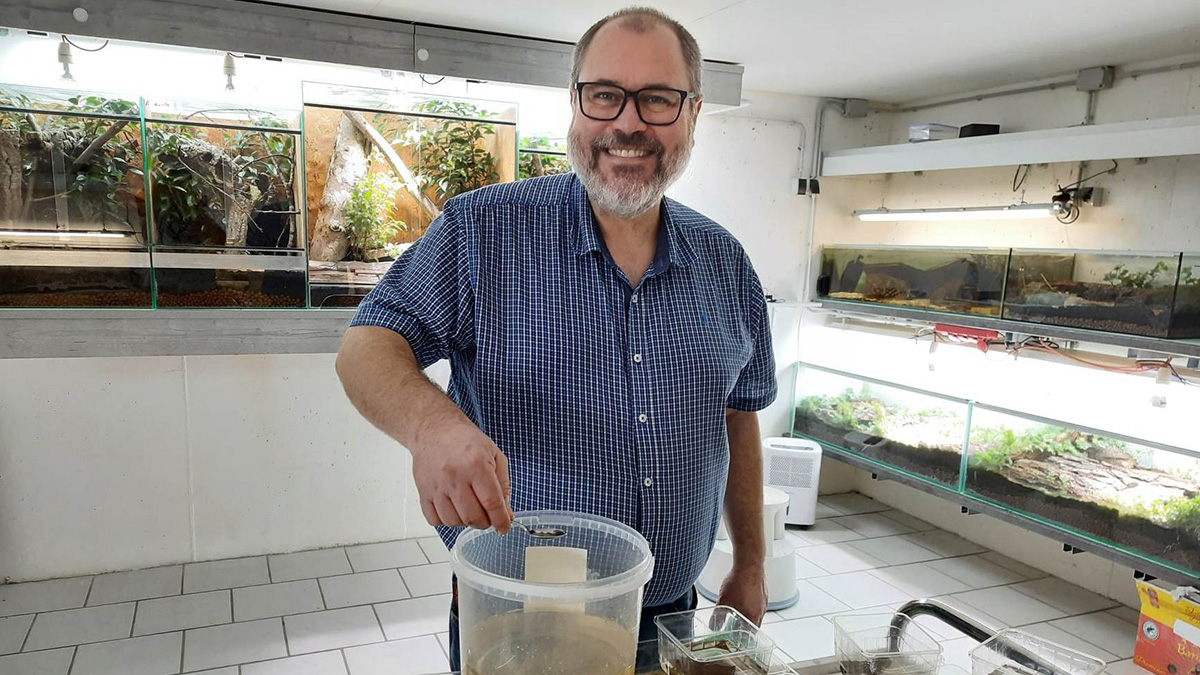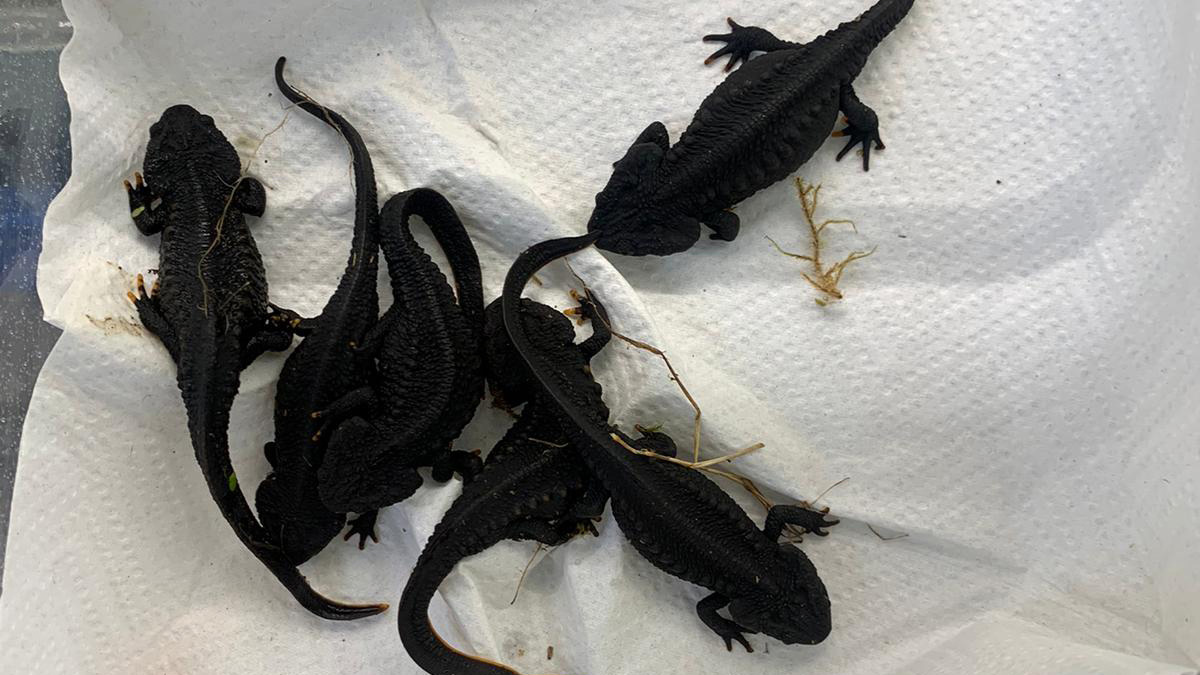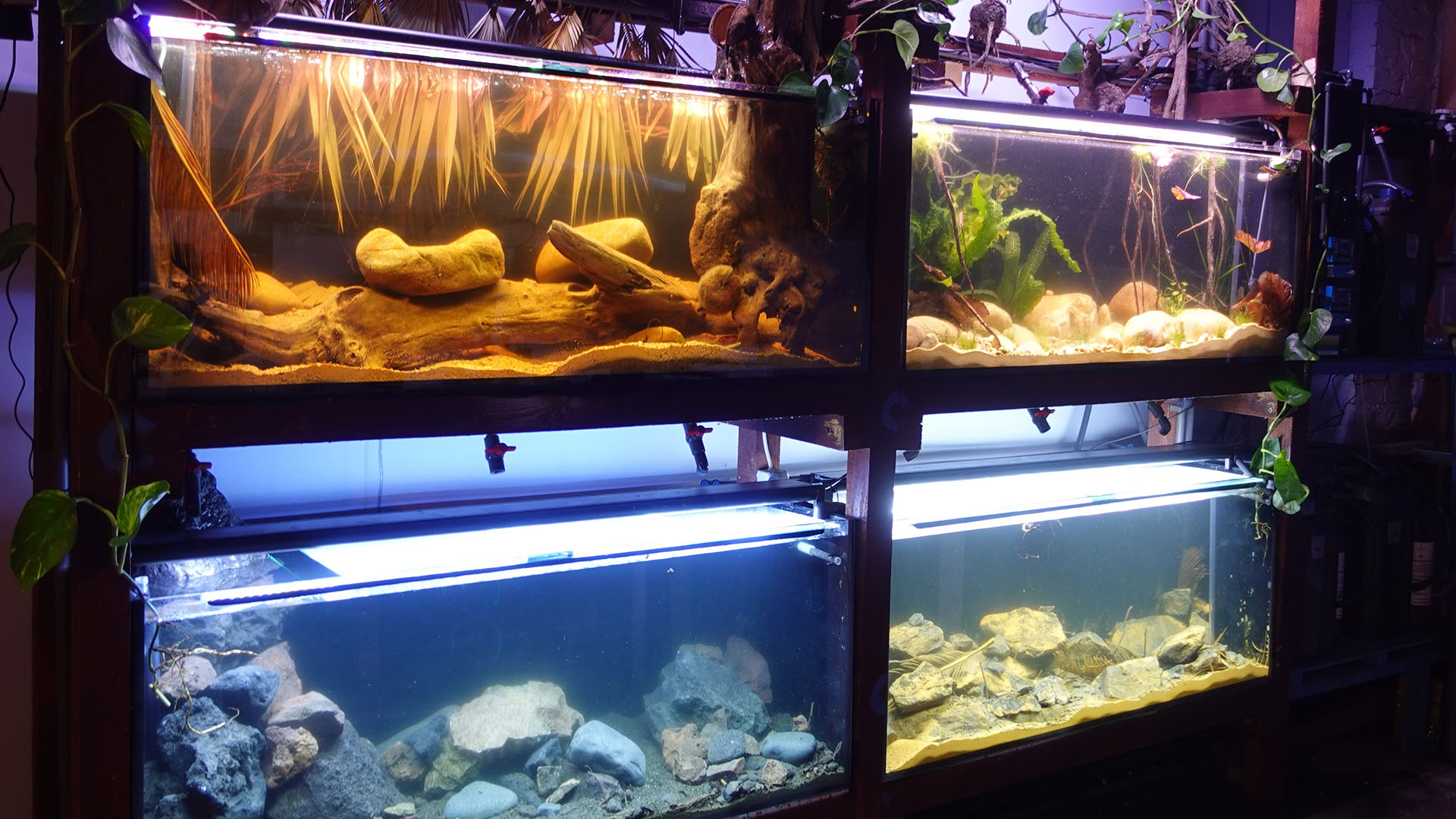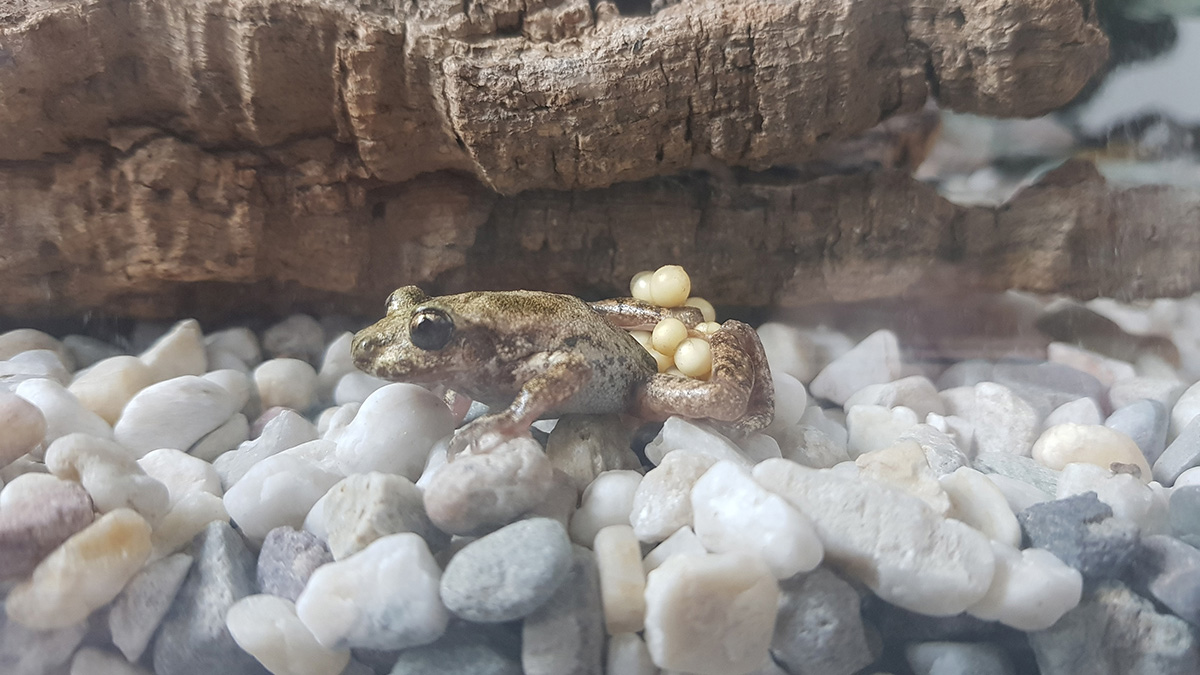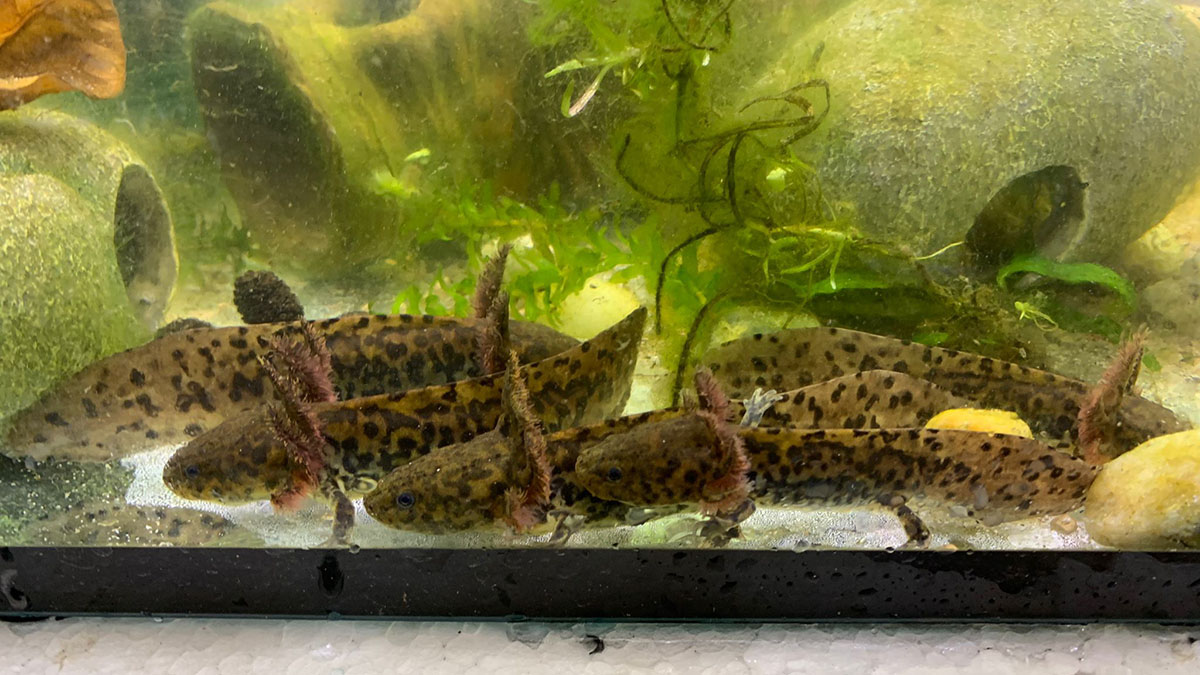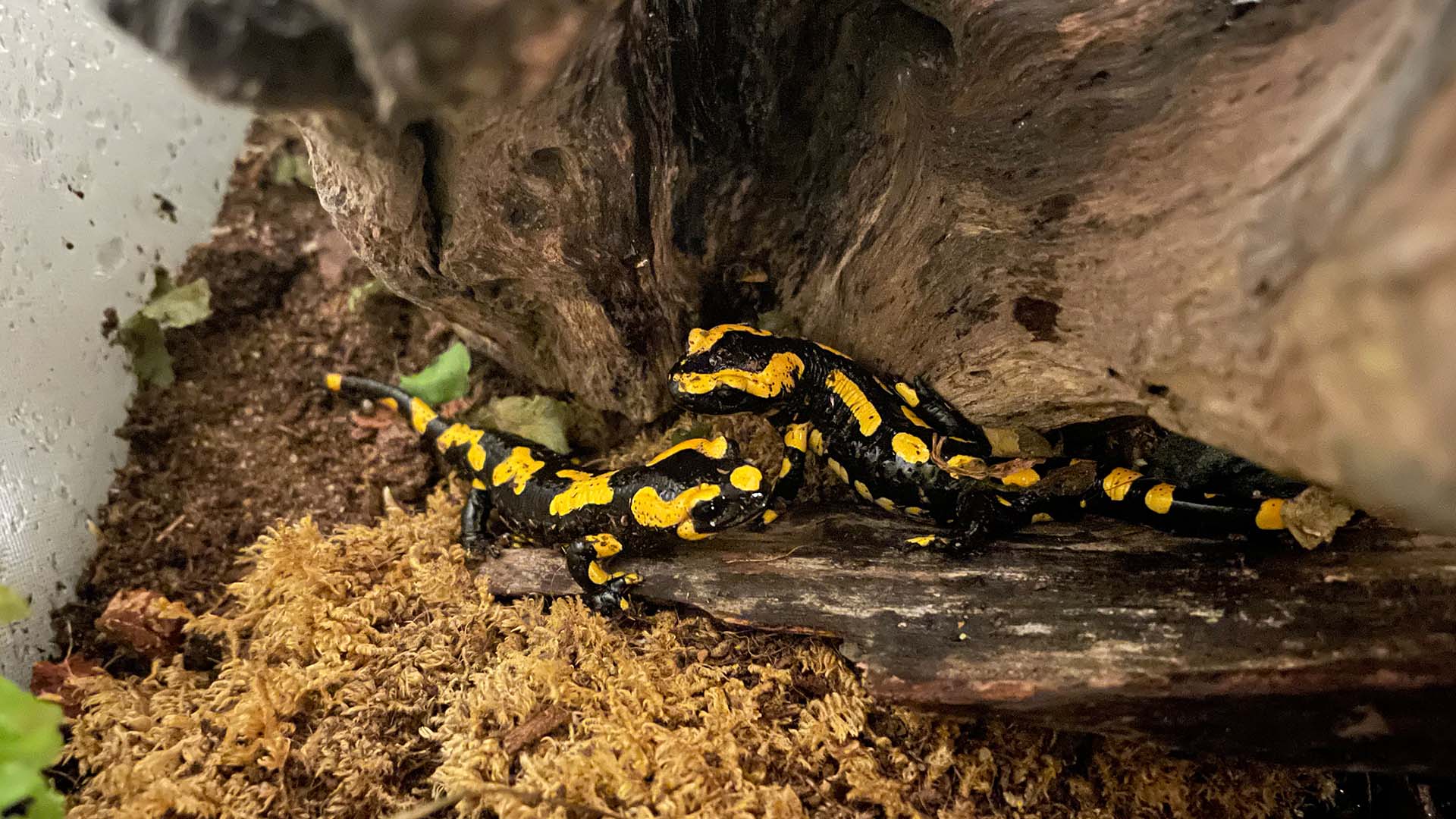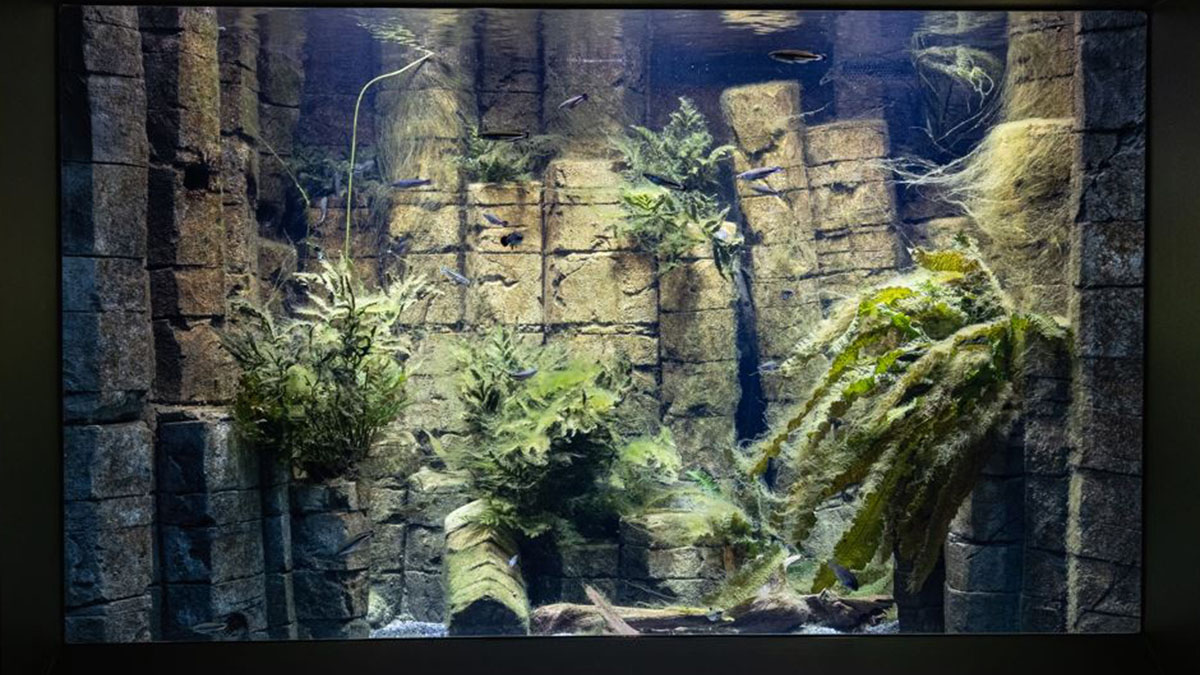
Animal balance 1/2023 – into a new phase
May 22nd is the International Day of Biodiversity – and for Citizen Conservation the occasion to present the balance of our contribution to its preservation. And the results are impressive!
Set goals...
The goals CC sets for its conservation breeding programs are not arbitrary, but have been determined using science-based population management tools. The goal is to establish populations in which the genetic diversity of the source animals is largely maintained over a 40-year period. To achieve this, we need a certain number of holdings and animals per species.
...come within reach
In the meantime, we have come very close to achieving these goals for the first species. For the Vietnamese crocodile newt, for example, we already have enough animals in our program thanks to good breeding success. Now we only need four more keepers to reach the required number of 30. This should still be possible this year. After that we can focus our efforts on the second species of the genus in our program: Ziegler’s crocodile newt.
The situation is similar for the Mangarahara cichlid, one of the rarest fish in the world, which may have already been extirpated in the wild. According to our calculations, to keep this species stable over 40 years, we need 16 husbandries with a total of 192 animals – 12 husbandries are already in place, and here too good breeding successes have ensured sufficient individuals. First successes with our two other species of Malagasy cichlids let us look optimistically into the future also for them.
Successes and efforts
Pátzcuaro’s cross-toothed newt, Majorca’s midwife toad and Chinese fire-bellied toad are also reproducing very successfully among CC participants. Lemur tree frog and bone-headed toad, on the other hand, are causing more trouble than originally thought. But even with these species, the knot will hopefully be broken.
For the fire salamanders, poison dart frogs, Titicaca giant frogs, Anderson’s cross-toothed newts, and Madagascar spadefoot, it is too early to make any statements, as these programs are just beginning.
To new shores
However, “target number reached” does not mean that we can sit back with satisfaction. For some species, we have initially only been able to draw on an extremely narrow genetic range in the initial animals – sometimes only on the offspring of individual pairs or siblings. Here, we hope to be able to obtain more foundation animals in the long term. In any case, the necessary infrastructure for long-term conservation breeding is already in place, in accordance with our guiding principle: build capacity.
We are also preparing to add a number of other amphibian, fish and, for the first time, reptile species. At the next balance at the end of November some new names will already be found on our species table – be curious!
Stock overview May 2023
(You can scroll horizontally in the table.)
| Scientific name | Engl. name | Animals total (m/f/u) | Keepers total | Deaths 11/22 – 04/23 (m/f/u) | New offspring 11/22 – 04/23 | External arrivals 11/22 – 04/23 | Aim (animals, keepers) | status* |
|---|---|---|---|---|---|---|---|---|
| Amphibians | ||||||||
| Agalychnis lemur | Lemur Leaf Frog | 44 (15/12/17) | 7 | 8 (0/0/8) | 0 | 0 | 225, 40 | 19% |
| Alytes muletensis | Majorcan Midwife Toad | 326 (7/10/309) | 27 | 12 (0/0/12) | 125 | 0 | 425, 53 | 64% |
| Ambystoma andersoni | Anderson’s Salamander | 76 (27/25/24) | 7 | 11 (0/3/8) | 0 | 3 | 225,40 | 26% |
| Ambystoma dumerilii | Lake Patzcuaro Salamander | 238 (58/45/132) | 21 | 6 (0/4/2) | 125 | 0 | 225, 40 | 76% |
| Bombina orientalis | Oriental fire-bellied Toad | 193 (30/20/143) | 16 | 26 (14/2/10) | 3 | 16 | 225, 60 | 56% |
| Ingerophrynus galeatus | Bony-headed Toad | 46 (16/14/16) | 10 | 28 (3/4/21) | 0 | 0 | 225, 40 | 23% |
| Minyobates steyermarki | Demonic Poison Frog | 15 (3/0/12) | 3 | 0 | 0 | 15 | 110, 20 | 14% |
| Phyllobates terribilis | Golden Poison Frog | 17 (8/2/7) | 3 | 5 (0/5/0) | 0 | 6 | 225, 70 | 6% |
| Salamandra sal. almanzoris | Almanzor Fire Salamander | 24 (17/7/0) | 7 | 2 (1/1/0) | 0 | 0 | 185, 30 | 18% |
| Salamandra salamandra (D) | Fire Salamander | 85 (11/11/63) | 11 | 3 (0/0/3) | 0 | 5 | 330, 90 | 19% |
| Telmatobius culeus | Titicaca Water Frog | 36 (6/6/24) | 6 | 0 | 0 | 0 | 225,45 | 15% |
| Tylototriton vietnamensis | Vietnamese Crocodile Newt | 193 (30/38/125) | 26 | 14 (1/0/13) | 63 | 14 | 185, 30 | 93% |
| Tylototriton ziegleri | Ziegler’s Crocodile Newt | 28 (0/1/27) | 7 | 3 (1/0/2) | 0 | 6 | 185,30 | 19% |
| Fish | ||||||||
| Bedotia madagascariensis | Madagascar Rainbowfish | 108 (19/5/84) | 8 | 22 (1/1/20) | 0 | 65 | 192, 16 | 53% |
| Ptychochromis insolitus | Mangarahara Cichlid | 277 (23/25/229) | 12 | 17 (7/7/3) | 55 | 100 | 192, 16 | 88% |
| Ptychochromis loisellei | Loiselle’s Ptycho | 197 (19/14/164) | 9 | 1 (0/1/0) | 120 | 19 | 160, 16 | 78% |
| Ptychochromis oligacanthus | Nosy Be Cichlid | 56 (6/4/46) | 3 | 0 | 0 | 12 | 192,16 | 24% |
m: male, w: female, u: undetermined sex * Status = mean value of the percentage of the target number of keepers already achieved and the target number of animals
NN = yet to be classified
